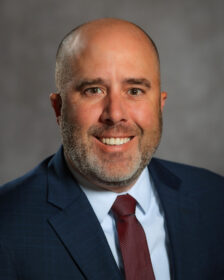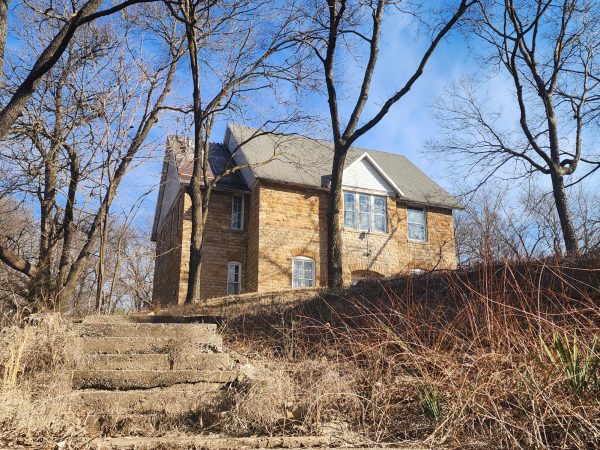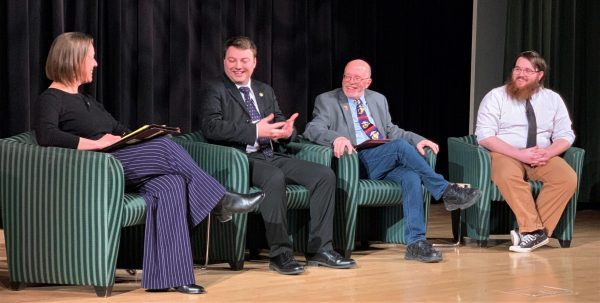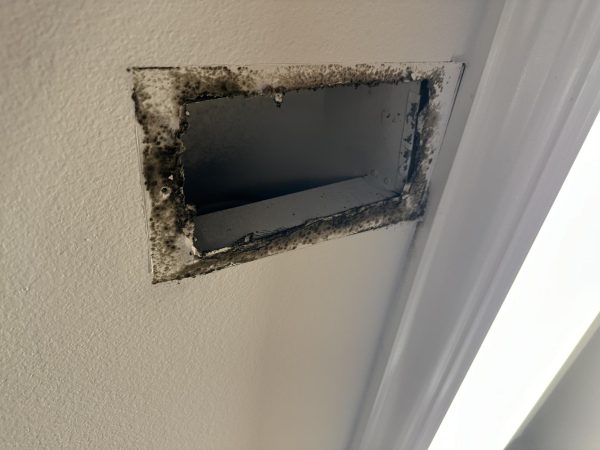Local cemetery at heart of geography project
As you leave Park University and drive north up Missouri Highway 9, you may glimpse out the window and catch a small piece of elevated land held up by a leaning stonewall. This is the Old Parkville Cemetery.
Brown grass creeps up the hill where headstones peep out of the dirt, some made of aggregate concrete, quartz and marble. Many are weathered and in the summer grow moss.
Visitors can walk up the north side of the hill where the retainer wall ends to get a clearer view. Tombstones dapple the top of hill and down the sides with some graves marked by the upright stones while others are lying down or missing.
The cemetery is the focus of the geographic information system project, which spans over several Park University academic groups including the science department, the history department, continuing education, public affairs, sociology and Park Distant Learning.
“The GIS project we have going on, one of the many, is a project on the old Parkville Cemetery where we are trying to map out all of the currently known grave site locations and develop a database that includes all of the information about each individual that is buried there,” said David Fox, assistant professor of geography, “all the information we can possibly find from historical records and compile that all into this database that can then be made available on both desk top and potentially online.”
This is all in an effort to help people interested in genealogy or family history of someone buried in the cemetery. “(People) could see this information and click to experience the site where their family member is buried,” said Fox. “(It will be available) to find out all the vital details about their life and death and hopefully it will have pictures that will be available.”
John Brock, a junior geography major and GIS laboratory assistant, is completing the physical mapping of the cemetery.
Using a map that was created by a Boy Scout for his Eagle badge and several other sources compiled by Scott Hageman, associate professor of Geology and associate dean for the School of Natural and Applied Sciences, Brock was able to find the most prominent headstones and collect a data point to mark that stone’s exact location using a piece of hand held GIS equipment.
These collected data points will later be added to a more current map and compiled to help those looking for family members or those interested in old cemeteries. This information will also be the basis for creating an online database and hopefully even an app that can be used on smart phones.
“There are well over 100 names that we think are buried here but do not have the marker to go with it,” said Hageman.
This can be troublesome for those that have a desire to trace their lineage.
The typical social and cultural burial practices of most individuals in the U.S. are to mark grave plots with headstones and in the 19th century to sometimes use a foot stone.
According to Fox, plotting the already existing markers might help with finding and marking the ones that are missing headstones. With so many missing grave markers, there are really only two ways to find the graves, he said.
One way would be to use a casket finder pole which is a simple tool that you push into the ground and if you hit something, there is likely a casket there. The second option is to use ground penetrating radar.
The radar equipment uses a method that is nondestructive electromagnetic radar pulses. These pulses are found in a radio spectrum frequency of UHF or VHF. Once the radar penetrates the subsurface, the frequency will rebound or reflect to show where objects are located. The team is hoping that in the future they will be able to obtain the GPR through either rental or purchase.
Not only will this project assist families but it also adds to the historical value of cemeteries, Hageman said. Being able to identify the dates on the headstones can lead to discovering what diseases or social issues were going on during that time. It will also bring light to the social structure of Parkville and even the possibility of caste systems in small towns.
If you have an interest in this project there is a Facebook page for the Old Parkville Cemetery. On the Facebook page there are links posted by Hageman that lead to the information about individuals that are buried there to include pictures.
You may also contact Fox for additional information at [email protected].
Your donation will support the student journalists of Park University. Your contribution will allow us to cover our annual website hosting costs, freeing up other funds for equipment, printing and training.








